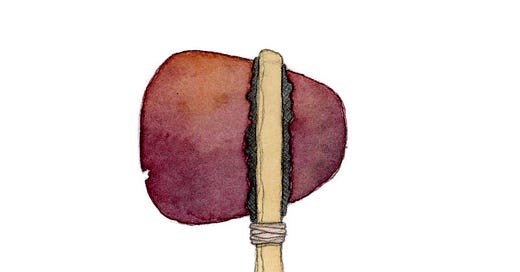Aboriginal people living in the northern region of Australia were the first in the world to develop ground-edge stone axe technology.
The world’s oldest example comes from Carpenter’s Gap on the Bunuba Nation in the Kimberley region. A fragment of a ground-edge stone axe was found in a sediment layer along with a piece of charcoal that has been radiocarbon dated to 46,4001 years old.
Ground-edge axes are made by grinding a basalt stone against sandstone over 2,000 times, creating a sharp, smooth blade. This is the earliest-known example of humans producing a uniform surface on a tool.
These ground-edge stone axes were haft, meaning they are also the world’s oldest-known axes with handles attached.
The second-oldest ground-edge stone axe comes from Nawarla Gabarnmang on the Jawoyn Nation in the Arnhem Land region of the Northern Territory and has been dated to 35,400 years old.
The oldest ground-edge stone axe found outside Australia is from Japan, dating to 35,000 years old. Most cultures around the world did not adopt ground-edge stone axe technology until the arrival of agriculture around 10,000 years ago.
Prior to making ground-edge tools, humans made knapped stone tools. This practice began 3.3 million years ago. Knapping is the process of striking a stone to break off a sharp flake.
The oldest example of a knapped tool is from Lake Turkana, Kenya and was made by Homo habilis, an early human ancestor of Homo sapiens. The oldest knapped stone hand axe dates to 1.3 million years old. It was found in Casablanca, Morocco and was made by our ancestors Homo erectus.
REFERENCES
https://www.anu.edu.au/news/all-news/archaeologists-find-world’s-oldest-ground-edge-axe-in-australia
https://blog.education.nationalgeographic.org/2016/05/13/scientists-identify-worlds-oldest-ax/
https://www.bbc.com/news/science-environment-32804177
The figure of 46,400 is the average of the estimated radiocarbon dates between 48,875 to 43,941 years ago = 46,408 years ago, rounded down to the nearest hundredth.



